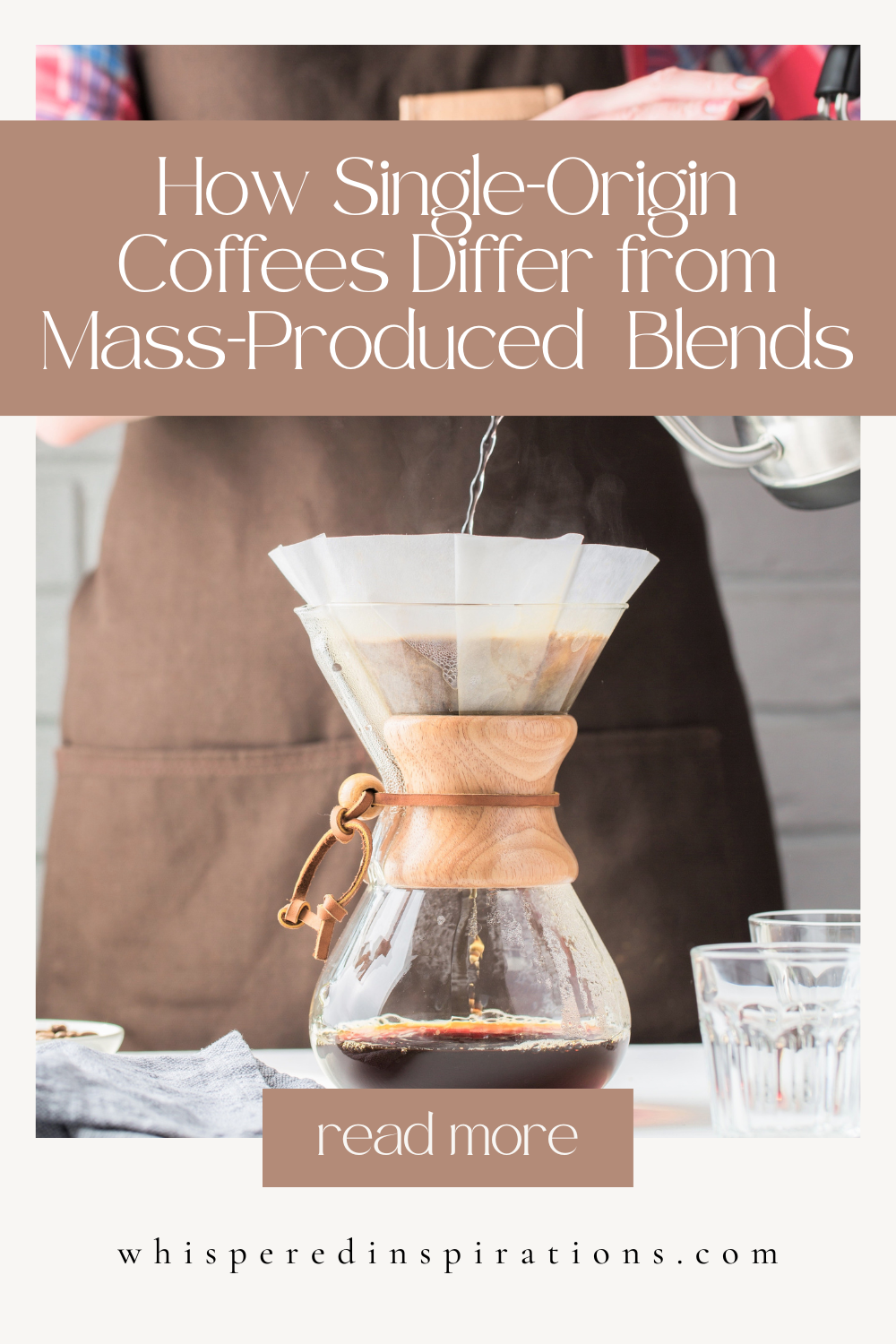The Authentic Taste of Single-Origin Coffee: How It Differs from Blends and Mass-Produced Coffees

The Authentic Taste of Single-Origin Coffee
Every day, countless individuals around the globe enjoy coffee, making it a highly sought-after beverage and one of the most beloved in the world.
But not all coffee is created equal, and the taste can vary dramatically based on where the beans are sourced from.
This article will explore the unique taste of single-origin coffee, how it differs from blends and mass-produced coffees, and why it’s worth seeking out.
What is Single Origin Coffee?
Single-origin coffee refers to coffee beans from a specific geographic location, such as a single farm, estate, or region.
These beans are not blended with beans from other locations. This allows for a unique flavour profile that reflects the soil, climate, and altitude of the area where they were grown.
The result is a distinct taste that is specific to that particular region.
How Does Single-Origin Coffee Differ from Blends?
Blended coffees are made by combining beans from different locations. The goal is to create a consistent taste that is the same from batch to batch.
This is regardless of where the beans were sourced from.
Combining beans with different flavour profiles often creates a balanced taste that appeals to many people.
Mass-produced coffees, often found in supermarkets and chain coffee shops, are often made using low-quality beans grown in large quantities. They are blended together to create a uniform taste.
These beans are often roasted to a dark roast level to mask any undesirable flavours that may be present in the beans.
Why is Single-Origin Coffee Special?
Single-origin coffee is special because it allows coffee lovers to explore and appreciate the unique flavours of different regions and countries.
Like wine enthusiasts appreciate the distinct taste of different grape varieties and regions, coffee lovers can do the same with single-origin coffee.
Each region has unique characteristics that affect the taste of the coffee, such as altitude, temperature, and rainfall.
For example, coffee grown in the volcanic soil of Guatemala has a unique flavour profile that is different from coffee grown in the mountains of Ethiopia.
Single-origin coffee also allows farmers to showcase their unique methods and techniques for processing and roasting coffee.
This can result in different roasts and flavour profiles within a single region, giving coffee lovers even more to explore.
How Can You Enjoy Single-Origin Coffee?
If you’re interested in trying single-origin coffee, there are a few things to keep in mind. First, it’s important to look for freshly roasted coffee beans.
It is often roasted in small batches, so finding a roaster that takes care of the roasting process is important.
Additionally, it is often available in various roasts, from light to dark. It’s worth experimenting with different roasts to find the one that best suits your taste.
Another essential factor to consider is the brewing method.
You May Also Like:
- Discovering the World of Coffee: A Comprehensive Guide to Buying Coffee Beans
- What Coffee Should You Drink Based on Your Mood
- Easy Vanilla Cinnamon Iced Coffee
- Delicious Coffee Tres Leches Cake
Single-origin coffee is often best enjoyed through manual brewing methods, such as pour-over or French press.
This allows you to appreciate the unique flavour profile of the coffee fully.
In conclusion, single-origin coffee offers a unique and authentic taste that differentiates it from blends and mass-produced coffees.
Its distinct flavour is influenced by the region where it’s grown, the soil, altitude, and weather conditions.
By opting for this coffee, enthusiasts can savour the different nuances and complexities of each origin, making the coffee-drinking experience more exciting and fulfilling.
Have you tried single-origin coffees?
Let me know, til then—cheers m’deres!

PIN FOR LATER:

Nancy Polanco is a freelance journalist, lifestyle content creator, and editor of Whispered Inspirations. She is a proud Mom to Gabby and Michaela and partner and best friend to Darasak. Having worked as part of a health care team for almost a decade, Nancy is happy to be back to her passion. She is a contributor to the Huffington Post, TODAY’s Parents, and an Oprah Magazine Brand Ambassador.







